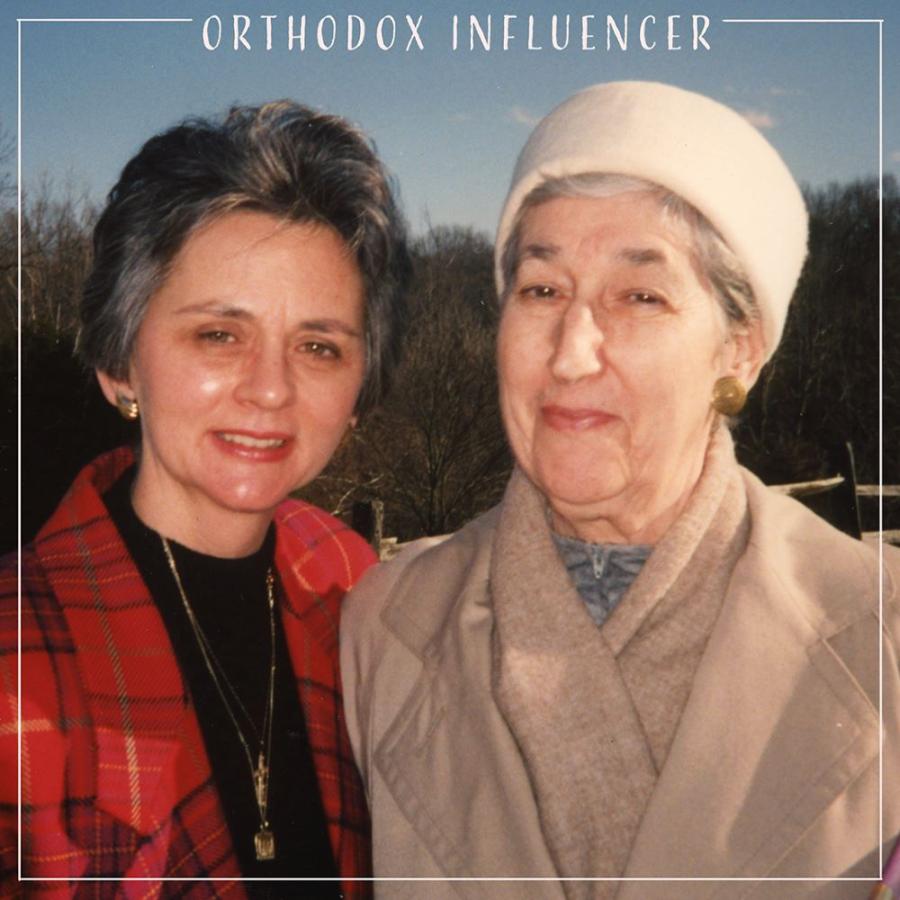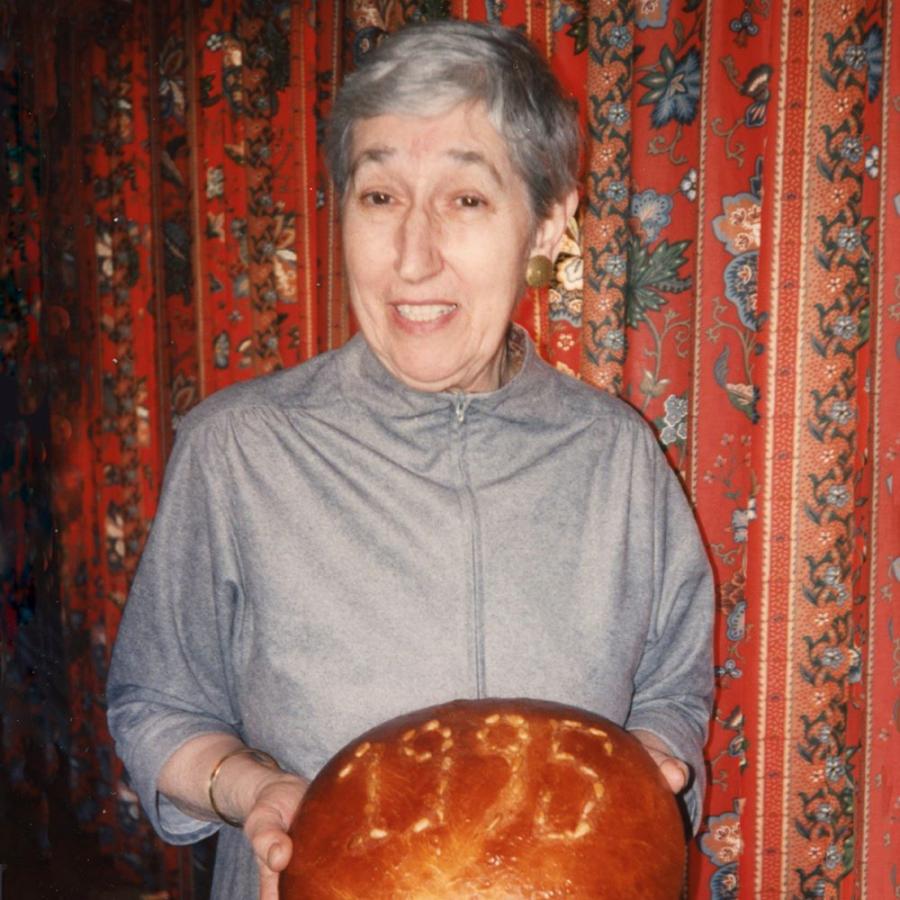
Eva Topping was a brilliant Orthodox scholar who wrote pioneering works about the lives of Orthodox women, their place in the church, and Byzantine hymnography. She devoted her life to scholarly work without pay, finding satisfaction and joy in some of the great libraries of the world: The Widener at Harvard University where she got her masters degree, The Gennadius at the American School of Classical Studies in Athens, and Harvard’s Byzantine Center at Dumbarton Oaks, Washington, DC. It was a life of the mind shared with her scholar husband, but also a life of devotion to the historic Orthodox Church.
Even before I converted to Greek Orthodoxy after marrying my Greek husband, I questioned the appearance of men in “dresses”(forgive my non-Orthodox viewpoint back then) at the front of the church during services. After converting, the questioning intensified when I learned that women were forbidden to go behind the altar. I wondered, what was this about?
Over time, however, I discovered many positive things about the Orthodox Church and Greek secular customs. I began research on a book to help converts understand the basics of the faith and bouzouki music. (The book, A Guide to Greek Traditions and Customs in America, was published in 1993.)
As the book was taking shape in 1991, someone in my church recommended that I seek the input of an academic named Eva Catafygiotu Topping who lived in my home town of McLean, Virginia, but attended a different parish. I didn’t know her, but contacted Eva, who was very busy and reluctantly agreed to meet. Little did I know how truly busy she was or that she would have such a profound influence on me, as she had already influenced many others with her books, Holy Mothers of Orthodoxy: Women in the Church (Light and Life Publishing, 1987), and Saints and Sisterhood: The Lives of Forty-eight Holy Women (Light and Light Publishing,1990),—neither of which I knew about. It turned out that Eva was a strong advocate for the increased recognition of women in the Orthodox Church. Maybe, I thought, she could explain why there were only men in “dresses” conducting services.
I’ll ever forget my first of many delightful visits to her home where she lived with her kind, gentle husband, Dr. Peter Topping. The home was modest, but filled to the brim with books. Peter was also an accomplished academic: aAmong other positions, he had been the librarian at the Gennadius Library at the American School of Classical Studies at Athens and, at the time, a Senior Research Associate at Harvard’s Byzantine Center at Dumbarton Oaks in Washington, DC. Eva had received her master’s degree from Harvard and studied in Europe on a Fulbright scholarship. How would these intellectual giants possibly have time to review my book draft? To my surprise, Eva and Peter loved teaching, including a novice just learning about the rich faith and culture they cherished. Between sips of tea, they would pull down reference books and share knowledge and experiences at our weekly meetings in their home. When we got to my chapter on the Sacrament of Ordination, there was nothing about women. That launched Eva’s eye-opening lecture on the current, robust efforts to revive the order of ordaining women deacons. She explained that from around the fourth to the twelfth centuries, there were women in “dresses” at services—ordained women deacons— who helped with them and performed administrative and pastoral work. She also answered my question about the “men in dresses,” explaining that clerical attire was a long tradition dating back to imperial times. Dating back to Judaic cleanliness laws, girls and women who menstruate would contaminate the altar area and the holy gifts, so only men were allowed. Thud. I wasn’t keen on that answer. (Fortunately, this is no longer an accepted view and is not taught at our seminaries.)
However, Eva assured me that things in the Orthodox Church were about to change regarding women deacons because in 1988—only three years earlier—the seminal Rhodes Consultation had occurred at a conference called “The Place of Woman in the Orthodox Church and the Questions of the Ordination of Women,” where the attendees, who included bishops, priests, and academics, heard presentations and concluded, “The apostolic order of deaconesses should be revived.” She directed me to one of the first books on women deacons by Matushka Ellen Gvosdev, The Female Diaconate: An Historical Perspective (Light and Life Publishing Company, 1991). I included this information in my book, which would spread the word and influence its readers. Now I was hooked. Would I live to see women deacons ordained in the Orthodox Church?
A few months later, Eva introduced me to an Australian woman named Leonie Liveris, who was visiting Eva in McLean. Leonie was the editor of an International Orthodox Women’s Journal, a product of the World Council of Churches “Ecumenical Decade: Churches in Solidarity with Women.” The council was sponsoring several conferences where Orthodox women from around the world could present theological papers, share experiences, and explore one of the goals of the WCC to “enable the churches to free themselves from racism, sexism, and classism; from teachings and practices that discriminate against women.” I subscribed to the Journal and received and still have all the issues but one from 1992 through 1997. The Journal opened my eyes and heart even wider, thanks to the writings of giants such as Elisabeth Beth-Sigel, Elizabeth Theokritoff, and Valerie Karras.
When my Traditions book was about to go to print in 1993, I asked Eva to write an endorsement blurb for the back cover, which she did. The religious editor, my priest, Fr. George Papaioannou at St. George Greek Orthodox Church in Bethesda, Maryland, vehemently objected. He knew of Eva and her “feminist” writing, such as “Orthodox Eve and Her Church,” a paper published in 1989 by The Patriarch Athenagoras Institute of the Graduate Theological Union at Berkeley, California. He also objected that she was a member of Orthodox Christian Laity, a “suspect” organization advocating for one Orthodox Church in the United States; in 1993, it published Project on Orthodox Renewal, a book that contained a chapter by Eva entitled, “Orthodox Women and Our Church.” According to Fr. George, if her name appeared on the cover, all the priests across America would forbid their parishioners from reading the book. I hesitated for a few minutes, but in gratitude for Eva’s guidance and enlightenment, put her endorsement on the cover. The book sold very well, and all the proceeds went to St. George Church.
In the ‘90s, my relationship with Eva was primarily personal. Eva and Peter became good family friends. I saw them frequently, including having them over to our home in 1995 to celebrate her nameday, January 1, the feast of St. Basil/Vasiliki. Incredibly, Eva had never learned to drive–which seemed contrary to her independent spirit–so I frequently drove her to doctor appointments or other outings. She asked me to help with the second edition of her book, Sacred Songs: Byzantine Studies of Hymns (Light and Life Publishing, 1997) by adding icons from the Dumbarton Oaks vault collection. The book contains a collection of eighteen scholarly articles—nine primarily about women—written between 1969 and 1991. I’m sure that the book has influenced many others, like me, to appreciate Orthodox hymns. When I was researching the Traditions book, Eva urged me to attend “The Akathist Hymn,” because it was the most beautiful one in the church. I went, expecting to hear something like Handel’s Messiah; but, disappointedly, it was virtually the same chant I heard every Sunday. What was she talking about? Eva explained that the beauty was the poetry and that the hymns contain all the theology of the church.
Despite her independent spirit, Eva became more reluctant to engage with the public and writing in the 2000s. As one of the pioneers for women in the Orthodox Church, she could have gone on speaking engagements and attended conferences, but for personal reasons she was reluctant. She followed developments in the church and knew about Kyriaki K. FitzGerald’s book Women Deacons in the Orthodox Church (Holy Cross Orthodox Press, 1998). When I updated the Traditions book in 2002, I called Dr. FitzGerald to find out what was happening with the female diaconate and became involved in St. Catherine’s Vision, a women’s group she led. She told me that women she had recently met at conferences had given up on ordination ever happening. That turned out not to be the case.
In 2013, a new group dedicated to reviving the diaconate, St. Phoebe Center for the Deaconess, began an extensive campaign to educate about the history of the deaconess with programs, conferences, and a comprehensive website, https://www.orthodox deaconess.org. I became involved, and it was my privilege to receive the St. Phoebe award in November 2023. Six months later, on May 2, 2024, a woman was ordained a deacon in the diaconate of Harare, Zimbabwe in the Patriarchate of Alexandria and Africa. It was a glorious moment in the Orthodox world, and I had lived to see it. Unfortunately, Eva did not. She fell asleep December 13, 2011, at the age of 91, at the home in McLean where she had kindly mentored and influenced me about the significant roles women have played in the Orthodox Church. Her pioneering work lives on in her books that are still available on the internet and in the next generations of both men and women who continue to educate and advocate for women as she did. Thank you, Eva, for enlightening and influencing so many of us. Axia! May her memory be eternal.
A prayer by Eva in 1989:
Gracious Creator of Light, We pray for our Holy Orthodox Church. Fill it with Truth and Peace. Where it is corrupt, purify it. Where it is in error, correct it. Where it is right, strengthen it. And where it is divided, restore its unity. We pray also for ourselves, daughters and sons of the Orthodox Church. Fill our minds with knowledge. Plant in our hearts faith, hope and love. We ask for these blessings through the intercessions of all the saints, our holy mothers and fathers. Amen.
Marilyn Rouvelas is a freelance writer and editor. Her editing includes Remembering and Reclaiming Diakonia by John Chryssavgis and Deaconessses: A Traditions for Today and Tomorrow, both published by Holy Cross Orthodox Press, Brookline, MA. She created, now defunct, www.orthodoxdeacons.org, a website dedicated to educating about male and female deacons in the Orthodox Church and is a member of St. Phoebe Center for the Deaconess, which gave her The St. Phoebe Award in 2023. Marilyn currently attends St. Sophia Greek Orthodox Cathedral, Washington, DC, and lives with her husband, Emanuel Rouvelas, in Arlington, VA, near the families of their son and daughter. They are empty nesters for a second time: all four grandchildren are away in college.



